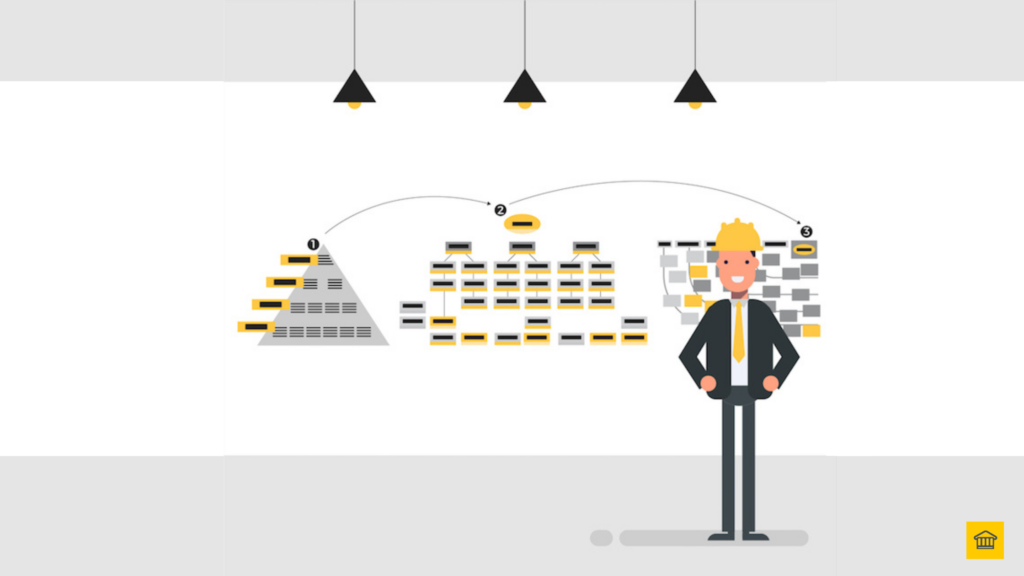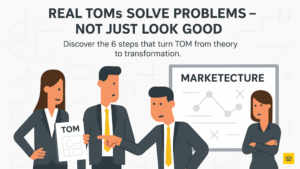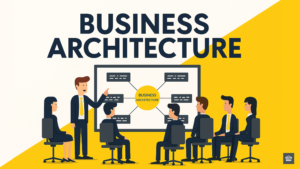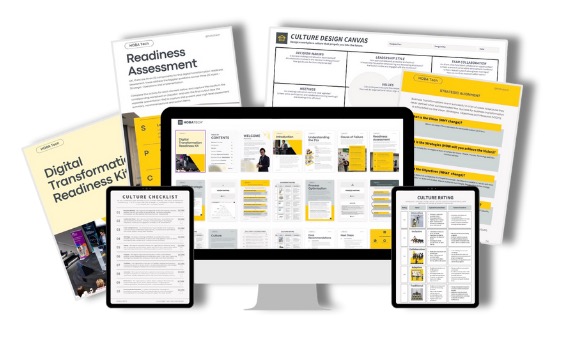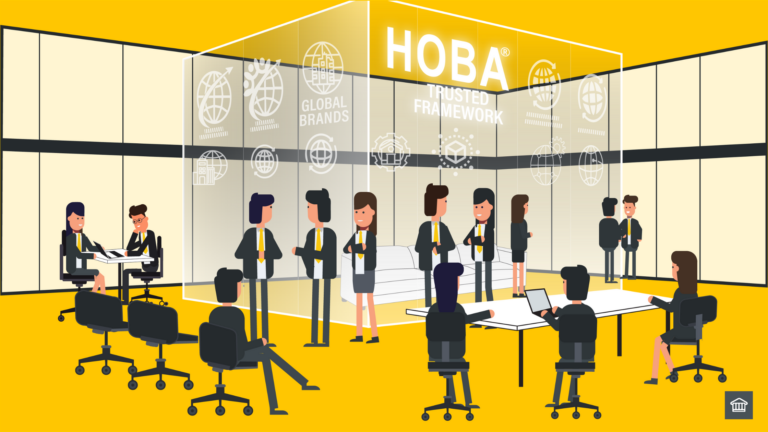Welcome to the second part of our insightful blog series from HOBA Tech, where we delve deeper into the journey of transforming a good service design agency into a great one. This post continues from where we left off, providing a comprehensive understanding of the remaining key steps and how they contribute to the overall growth and success of a service design agency.
In this post, we aim to equip you with the knowledge and tools necessary to elevate your agency to the next level. We will explore the importance of building a strong team, fostering a culture of innovation, and delivering exceptional client service.
Here’s a quick overview of what you can expect in this post:
(click the links to skip to the section below):
NB: Click the images to expand them 📸
As promised, here’s the 2nd (of 2) parts of our previous post containing the top mistakes Service Design agencies make when trying to establish themselves. As a reminder, in this context as a ‘Service Design’ agency, you can be an internal or external consultancy that helps you or your Clients Organisation design (and implement) its services through the design (and implementation) of its future ‘Target Operating Model (TOM)’.
In the previous post, we discussed the five (5) toxic mistakes Service Design Agencies make how not prioritizing your customers enough, faulty templates, undisclosed value propositions, communication errors, and training blunders can cost both your Clients but also your business in the long run.
Now, let’s have a look at how your company (having now addressed those toxic mistakes discussed in the previous post), and go from a Good to Great Service Design agency.
Today, the Service Design industry is all about creating unique and innovative customer experiences and delivering optimum value. It has now become a booming field that allows managers and designers to leverage technology and the latest developments to create something distinctive.
The truth is, no matter how fancy it sounds, creating new business designs is definitely a tough job. Even the largest of corporations struggle to remain afloat at times. The major challenge here is to avoid the common pitfalls and work on building something truly unique that your customers fall ‘head over heels’ in love with.
Here we have compiled a step-by-step guide on how businesses in the Service Design sector can make their mark. In summary, here are the main steps:
- Forming a clear process and setting your focus straight
- Creating a unique value proposition to help your customers see why you’re special
- Making sure your business communications are crystal clear and there are zero barriers in between
- Crafting a well-thought-out template
- And getting your training right
So, let’s get started!
5 Steps to Being a Good Service Design Agency
1. Constructing a Clear Process
First off – you need to start out with a clear process. This involves setting your focus straight and operating with utmost control. Our tried and tested blueprint involves the following core elements:
- Focus
- Control
- Analyse
- Evaluate
- Design
- Implement
Here is how it works: Evaluate the scope and risks of your design. Before moving forward, you need to define the starting point and analyze your current position.
While you’re at it, you need to make sure that the stakeholders, customers, employees – all have the same end in mind (that’s your Vision). Once you’ve made sure everyone’s happy, you can then move onto creating and implementing a business design that addresses your customer’s pain points to exceeds their expectations.
You might be interested in this piece I wrote on how to get your business design right.
The agile methodology will help you significantly in this aspect. Here is my exclusive 6-week course on agile transformation to accelerate your success!
But before you move onto the designing aspect, you need to map out your customer journey. Ask yourself – how will you engage with your customers, how will you make them a part of THEIR journey (after all, it is them that is experiencing the change)?
Your business needs to take necessary measures to improve its Customer engagement in order to build a strong connection with your consumers. In approximately 70% of the cases, when a customer quits doing business with a company, it’s because of the poor service delivery.
Therefore, you must practice some, if not all, of these steps to ensure that you gain customer satisfaction.

6-Steps to Business Transformation Success
WHAT THE TOP 30% OF ORGANISATIONS KNOW THAT YOU DON’T 👉

👏 "The five (5) toxic mistakes Service Design Agencies make how not prioritising your customers enough, faulty templates, undisclosed value propositions, communication errors, and training blunders can cost both your Clients but also your business in the long run. 🚀💡#BusinessArchitecture #ServiceDesign #ServiceDelivery"
Heath Gascoigne Tweet
Therefore, you must practice some, if not all, of these steps to ensure that you gain customer satisfaction.
Keep your customers in the loop
Make them realize that ensuring their satisfaction is your number one priority. Keep them updated along the design journey. This goes a long way in building your name and brand reputation, recognition and respect which done right can be VERY rewarding in the long run.
Personalisation
Meeting ‘technical’ design and ‘physical’ changes is important, but it comes secondary to listening and understanding your customers needs. You should make sure you actually listen to and use your clients words in your materials and conversation to show you are listening and incorporating what they need into the designs you are developing. This level of personalisation will help break down change readiness and inertia and help distinguish you from the competition.
Utilise live chat for customer engagement
According to Emarketer, 63% of customers are likely to return to an online service that provides live chat.Remote and virtual working got exacerbated due to COVID. Utilise these remote and virtual working tools to strengthen your customer engagement by carrying out proper live chat protocols.
Improve customer experience using social media
The power of Social Media is still misunderstood and undermined by majority of the brands. In order to stay relevant, you need to be seen frequently. What better way to do that other than Social Media?
Value customer feedback
The value you give to customer feedback is what makes the difference between a successful and a failed brand. You need to show the customers that they are part of the design cycle and their input is crucial.
Keep your customers in the loop
Make them realize that ensuring their satisfaction is your number one priority. Keep them updated along the design journey. This goes a long way in building your name and brand reputation, recognition and respect which done right can be VERY rewarding in the long run.
Personalisation
Meeting ‘technical’ design and ‘physical’ changes is important, but it comes secondary to listening and understanding your customers needs. You should make sure you actually listen to and use your clients words in your materials and conversation to show you are listening and incorporating what they need into the designs you are developing. This level of personalisation will help break down change readiness and inertia and help distinguish you from the competition.
Utilise live chat for customer engagement
Remote and virtual working got exacerbated due to COVID. Utilise these remote and virtual working tools to strengthen your customer engagement by carrying out proper live chat protocols.
Improve customer experience using social media
The power of Social Media is still misunderstood and undermined by majority of the brands. In order to stay relevant, you need to be seen frequently. What better way to do that other than Social Media?
Value customer feedback
The value you give to customer feedback is what makes the difference between a successful and a failed brand. You need to show the customers that they are part of the design cycle and their input is crucial.

👏 "The value you give to customer feedback is what makes the difference between a successful and a failed brand. You need to show the customers that they are part of the design cycle and their input is crucial. 🚀💡#BusinessArchitecture #ServiceDesign #ServiceDelivery"
Heath Gascoigne Tweet
2. Putting Forth Your Value Proposition
Designing a value proposition can be quite tricky, considering how the customer behavior influences the business in multiple ways. You need to explain why both your stakeholders and customers should agree with your companies’ policies and claims of providing the best quality.
In this regard, you can practice a set of steps that ensure your value propositions are customer-focused.
Identify your business challenge
Firstly, you need to clarify the problem or ‘pain points’ and assess the market challenges/opportunities that both you, and your client are facing (TIP: in most cases they wont be the same thing, so don’t assume what is good for you is automatically good for your Client). Make sure to keep in mind the demographic and cultural differences in your consumers and try to satisfy them accordingly.
Understand your customers to identify their needs
Now, gain understanding about the customer by assessing customer insights using focus groups, field studies, customer surveys, interviews, etc.
Combine all insights and identify the key problems
After gathering the information, you need to define the pain points by combining the customer insights and figuring out the key problems being faced by the majority of your customers. This will save you time and money.
Generate ideas and develop value propositions collaboratively
Organise collaborative workshops and involve your employees to come up with innovative ideas and concepts that will serve as the foundation of your new customer-focused value propositions.
Develop a business model for the new value propositions
Now in order to dig deep into the roles, channels, processes, and investment needed for the solutions, identify the factors that will favor all these aspects and look for a common solution. Your new model should highlight your unique value propositions – allowing your customers to see why you are better than the competitors (Note – if you are an internal consultancy, don’t think that because you are ‘internal’ your Organisation or other divisions wont shop around. Your value proposition needs to standup to ‘external’ competition too. The question to ask is ‘would I pay for this service we provide?’ If not, this is where you start. Fixing the answer to that question).
Track, learn, change… Repeat
Lastly, track the changes that occur as the product/service evolves within the customer journey and implement the required changes to ensure maximum customer satisfaction.
3. Employing Clear Communication
Customer Communication is probably the most important aspect for a business that directly influences customer retention. In order to ensure long-term success, businesses need to implement specific communicational practices that ensure the customers feel comfortable with the brand.
Gaining clarity
For the business to understand what the client demands, there needs to be clarity in the communication mediums. Clarity of communication can easily be achieved by asking the right questions. This helps eliminate any ambiguity or confusion and enables the business to better understand the customers’ situation.
Implementing change
Customers feel welcome when they notice their feedback and suggestions were valued and were implemented. Although customers’ requirements keep changing time-to-time, the adaptability of a brand to cope with their changing needs and implementing them greatly increases the chances of customer retention.
Keeping in touch
It is a fact that almost all customers hate being bombarded with continuous messages, however humans feel relieved and connected when they are being communicated with. It makes them feel that they are important. This emotional response appeals to the consumer psychology and helps them develop a unique connection with the brand.
Clear Communications
Customer Communication is probably the most important aspect for a business that directly influences customer retention. In order to ensure long-term success, businesses need to implement specific communicational practices that ensure the customers feel comfortable with the brand.
Gaining clarity
For the business to understand what the client demands, there needs to be clarity in the communication mediums. Clarity of communication can easily be achieved by asking the right questions. This helps eliminate any ambiguity or confusion and enables the business to better understand the customers’ situation.
Implementing change
Customers feel welcome when they notice their feedback and suggestions were valued and were implemented. Although customers’ requirements keep changing time-to-time, the adaptability of a brand to cope with their changing needs and implementing them greatly increases the chances of customer retention.
Looking to transform your Organisation with less stress & less time? Search no more!
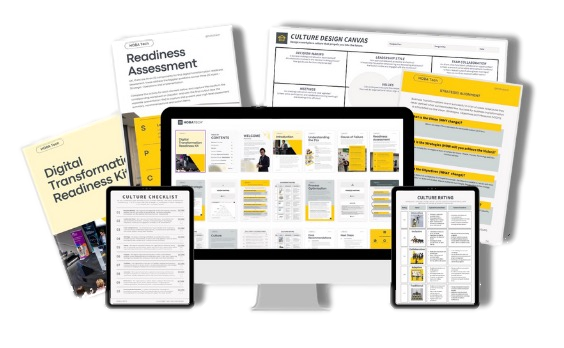
- Introductory Offer
- Huge Savings. On Sale Now!
👏 "For the business to understand what the client demands, there needs to be clarity in the communication mediums. Clarity of communication can easily be achieved by asking the right questions. 🚀💡#BusinessArchitecture #ServiceDesign #Consultancy"
Heath Gascoigne Tweet
Keeping in touch
It is a fact that almost all customers hate being bombarded with continuous messages, however humans feel relieved and connected when they are being communicated with. It makes them feel that they are important. This emotional response appeals to the consumer psychology and helps them develop a unique connection with the brand.
4. Crafting Well-Thought-Out Templates
We, at HOBA, refer to the templates as Reference Models, Building Blocks and Blueprints – yes they are that crucial! When designing the template, you need to make sure it is:
Functional and easily applicable
Creating a template based off of assumptions is no good. The template you build needs to be tested (multiple times) and reconstructed until it is easily applicable and blends beautifully into your system. It should bring your business’s vision and goals to fruition.
Focuses on quality over quantity always
It is crucial that you focus on the quality a lot more than the quantity or volume of the work. While maintaining the quantity does have its own significance, but if the end result (product or service) lacks quality – all your efforts will be in vain. Remember – your business model revolves around the customer and you need to deliver the best value to your clients in order to succeed.
Contains primary KPIs and the time span it’ll take to cover them
Even if you manage to create a flawless template, if it doesn’t fulfill your business goals within the desired time period, it is practically a failure. The best route to follow is to define the primary KPIs and objectives and the time it will take to achieve those targets. While you’re at it – make sure to be realistic when defining the time indicators. Going overboard on these is just going to cost you in terms of the costs and time spent. Basically, your KPIs need to be SMART.
Practical and Implementable
The template you create should contain practical, approachable steps and goals that are well within your reach. It is very important to not go overboard with the positives in an attempt to create something innovative. The template is essentially your framework to success, so it is crucial to make sure that is implementable.
Here’s a tip – try simplifying the entire process by breaking down the ‘bigger’ steps into ‘smaller’ more practical steps. This will make it easier for the employees to work towards the goals. Plus, it will work well in your favor when you take your case to the stakeholders. They’re more likely to proceed with the template if they can read it on their own, without your walking them through it or needing a ‘guide’ to understand it (I’ve seen the latter many time… while looking impressive, end up being in fact, useless).
5. Getting Your Training Right
In pursuit of becoming a state-of-the-art Service Design agency, the most important factor is the training of your employees to ensure they’re providing the best customer experience.
Training serves as a defining factor for service quality because understanding the contexts (and changes) is one thing and implementing them is another. Although old methods practiced by service employees were fruitful and yielded results, they are a thing of the past now.
Your staff needs to learn about the latest effective methods in order to yield successful results. In order to increase its productivity, allService Design agencies need to follow the following steps.
Explore the strategic training needs
Firstly, you need to see if your employees require the relevant training. This can be done by observing and interviewing your employees or customers to perform a gap analysis and identifying the importance of a training program based on the organization’s strategic goals.
Design and develop the training program
After the identification of needs, you need to set measurable objectives to ensure you have a performance metric to evaluate the results.
Deliver and implement the training program
In order to make this training process effective, you need to carry out multiple pre-training motivation sessions to support the training and to remove all kinds of barriers that might interrupt the flow of the process.
Measure and evaluate the training outcomes
Lastly, you need to track, measure, and evaluate the training program to ensure the effectiveness of the program is intact. By the end of the program, you need to have certain answers to generic questions such as: Did it change the behavior and/or improve the service value?Which part(s) of the training were effective?
Looking for the Best Training to deliver your Business Transformation? Search no more!
- 30-Day Money-Back Guarantee
- Risk FREE

👏 "For the business to understand what the client demands, there needs to be clarity in the communication mediums. Clarity of communication can easily be achieved by asking the right questions. 🚀💡#BusinessArchitecture #ServiceDesign #Consultancy"
Heath Gascoigne Tweet
Conclusion
In conclusion, the second part of HOBA Tech’s blog post series has provided valuable insights into the transformation of a good service design agency into a great one. The post emphasizes the importance of building a strong team, fostering a culture of innovation, and delivering exceptional client service. These are not just theoretical concepts, but practical tools that can be applied in the real world. By understanding and implementing these steps, service design agencies can elevate their performance and stand out in the competitive industry.
If you found this post informative and would like to delve deeper into the world of service design and related topics, we invite you to explore further on HOBA Tech’s website.
For those interested in discussing how HOBA Tech can assist your service design agency in its transformation journey, please don’t hesitate to contact us. We look forward to hearing from you and helping your agency to thrive.
Hope you found tremendous value in that!
Let me know what you think in the comments, and what you would like to see next.
Thank you for reading this!
Sincerely,

Heath Gascoigne
P.S. If you want to join our Business Transformator community of 2,000+ like-minded Business Transformators, join the community on the Business Transformator Facebook Group here.
P.P.S. If you want to learn more about business transformation, check out The Business Transformation Playbook here.
For more information, visit https://www.hoba.tech



